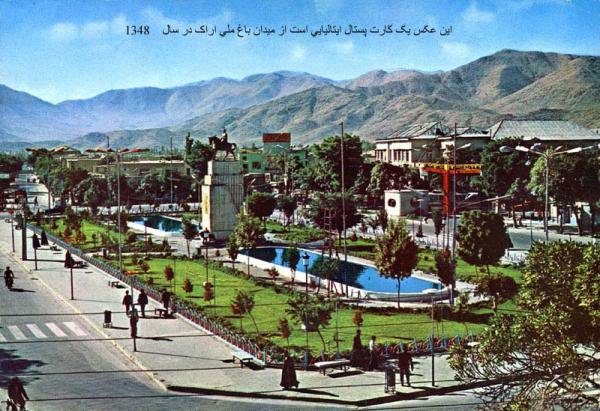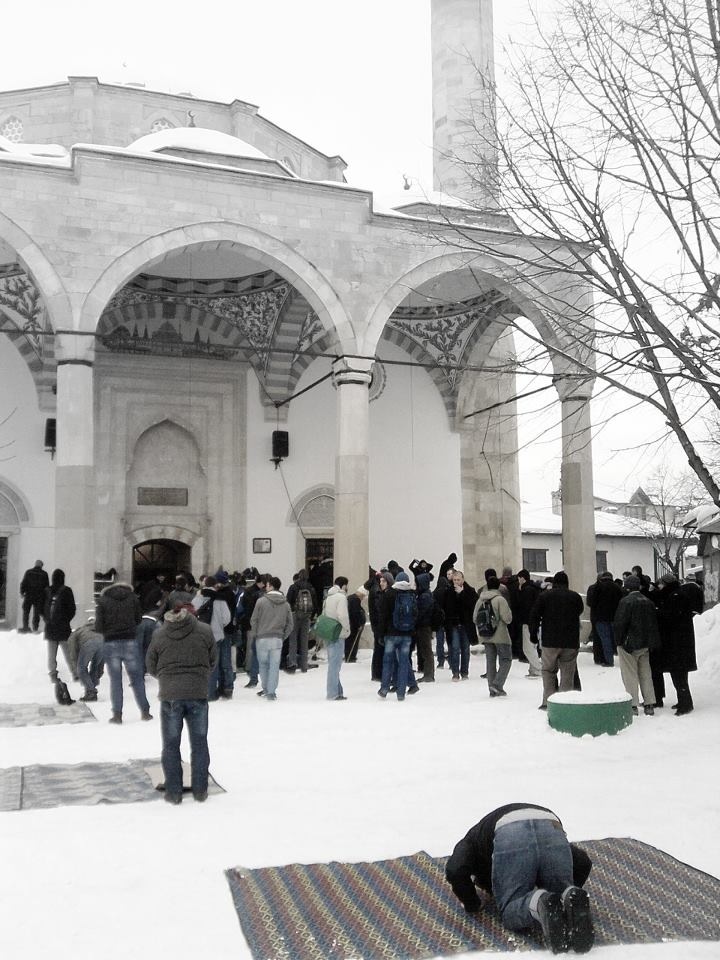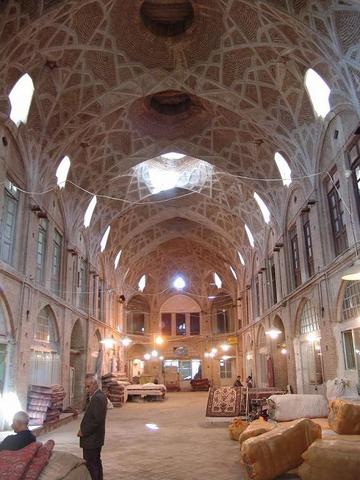|
Jameh Mosque Of Arak
Jameh Mosque of Arak the Jumu'ah venue of Arak, which is located at the beginning of Bazaar of Arak. See also * Islam in Iran The Muslim conquest of Persia () led to the end of the Sasanian Empire and triggered the decline of Zoroastrianism among the Iranian peoples due to large-scale persecution by Arab Muslims under the newly-arrived Rashidun Caliphate. Since its es ... References Buildings and structures in Markazi province Mosques in Iran Mosque buildings with domes National works of Iran Arak {{Iran-mosque-stub ... [...More Info...] [...Related Items...] OR: [Wikipedia] [Google] [Baidu] |
Shia Islam
Shīʿa Islam or Shīʿīsm is the second-largest branch of Islam. It holds that the Islamic prophet Muhammad designated ʿAlī ibn Abī Ṭālib as his successor (''khalīfa'') and the Imam (spiritual and political leader) after him, most notably at the event of Ghadir Khumm, but was prevented from succeeding Muhammad as the leader of the Muslims as a result of the choice made by some of Muhammad's other companions (''ṣaḥāba'') at Saqifah. This view primarily contrasts with that of Sunnī Islam, whose adherents believe that Muhammad did not appoint a successor before his death and consider Abū Bakr, who was appointed caliph by a group of senior Muslims at Saqifah, to be the first rightful (''rāshidūn'') caliph after Muhammad. Adherents of Shīʿa Islam are called Shīʿa Muslims, Shīʿītes, or simply Shīʿa or Shia. Shīʿa Islam is based on a ''ḥadīth'' report concerning Muhammad's pronouncement at Ghadir Khumm.Esposito, John. "What Everyone Nee ... [...More Info...] [...Related Items...] OR: [Wikipedia] [Google] [Baidu] |
Arak, Iran
Arak ( fa, اراک, ''Arâk''; ) is the capital of Markazi Province, Iran. At the 2011 census, its population was 526,182, in 160,761 families. The city is nicknamed the "Industrial Capital of Iran". As a major industrial city, Arak hosts several industrial factories inside and within a few kilometers outside the city, including the factory of Machine Sazi Arak and the Iranian Aluminium Company. These factories produce nearly half of the needs of the country in steel, petrochemical, and locomotive industries. As an industrial city in a developing country, Arak suffers from air pollution. Etymology Arâk The term ''Arâk'' remains from a name given to the region since the medieval period. It derives from Arabic '' al-ʿIrāq'', meaning "root", itself derived possibly from Akkadian ''Uruk'' ( he, אֶרֶךְ, ''Erech''). But new research has shown that the word Arak has the same roots with the words Iran and Arran, and the name Iraq is an Arabicized Persian word. During the ... [...More Info...] [...Related Items...] OR: [Wikipedia] [Google] [Baidu] |
Mosque
A mosque (; from ar, مَسْجِد, masjid, ; literally "place of ritual prostration"), also called masjid, is a place of prayer for Muslims. Mosques are usually covered buildings, but can be any place where prayers ( sujud) are performed, including outdoor courtyards. The first mosques were simple places of prayer for Muslims, and may have been open spaces rather than buildings. In the first stage of Islamic architecture, 650-750 CE, early mosques comprised open and closed covered spaces enclosed by walls, often with minarets from which calls to prayer were issued. Mosque buildings typically contain an ornamental niche ('' mihrab'') set into the wall that indicates the direction of Mecca (''qiblah''), Wudu, ablution facilities. The pulpit (''minbar''), from which the Friday (jumu'ah) sermon (''khutba'') is delivered, was in earlier times characteristic of the central city mosque, but has since become common in smaller mosques. Mosques typically have Islam and gender se ... [...More Info...] [...Related Items...] OR: [Wikipedia] [Google] [Baidu] |
Jumu'ah
In Islam, Friday prayer or Congregational prayer ( ar, صَلَاة ٱلْجُمُعَة, ') is a prayer ('' ṣalāt'') that Muslims hold every Friday, after noon instead of the Zuhr prayer. Muslims ordinarily pray five times each day according to the sun's sky path regardless of time zones. ''Jumu’ah'' means Friday in the Arabic language. In many Muslim countries, the weekend is inclusive of Fridays, while in others, Fridays are half-days for schools and some workplaces. Meaning It is one of the most exalted Islamic rituals and one of its confirmed obligatory acts. Obligation There is consensus among Muslims regarding the Friday prayer (''salat al-jum‘ah'') being ''wajib'' - required - in accordance with the Quranic verse, as well as the many traditions narrated both by Shi’i and Sunni sources. According to the majority of Sunni schools and some Shiite jurists, Friday prayer is a religious obligation, but their differences were based on whether its obligation is condi ... [...More Info...] [...Related Items...] OR: [Wikipedia] [Google] [Baidu] |
Bazaar Of Arak
The Bazaar of Arak is one of the first constructed buildings in the city of Arak (central Iran). The bazaar complex, containing a public bath, a mosque, water reservoirs, passages and caravansary, was built at the time of Fath-Ali Shah Qajar and by Yusef Khan-e Gorji, in the middle of Sultan Abad (Arak's former name). This bazaar is centered at Chahr soogh, which is the junction of two north–south and east–west paths that end to four ancient city gates. History The bazaar and the city of Sultan Abad (today Arak) were built simultaneously. Although it took a few years for the city to be built but no exact date has been recorded for the establishment of bazaar. As noted in historical texts it took about twenty years for the whole city to be built. Bazaar was built at the same time. The first buildings in Arak bazaar were built in 19th century by the order of the time governor of Arak, Sepahdar Aazm whose name has remained on a mosque and a school One reason to establish this ... [...More Info...] [...Related Items...] OR: [Wikipedia] [Google] [Baidu] |
Islam In Iran
The Muslim conquest of Persia () led to the end of the Sasanian Empire and triggered the decline of Zoroastrianism among the Iranian peoples due to large-scale persecution by Arab Muslims under the newly-arrived Rashidun Caliphate. Since its establishment after the 7th-century conquest, Islam has remained the official religion of Iran (also known as "Persia") except for during a short period after the Mongol invasions and subsequent establishment of the Ilkhanate in the 13th century. The 1979 Islamic Revolution brought an end to the historic Persian monarchy, after which Iran emerged as an Islamic republic. Before the Muslim conquest, mainland Iranians primarily adhered to the Iranian religion of Zoroastrianism; there were also large and thriving Jewish and Christian communities, especially in the territories of northwestern, western, and southern Iran—mainly Caucasian Albania, Asoristan, Persian Armenia, and Caucasian Iberia. A significant number of Iranian peoples also adhe ... [...More Info...] [...Related Items...] OR: [Wikipedia] [Google] [Baidu] |
Buildings And Structures In Markazi Province
A building, or edifice, is an enclosed structure with a roof and walls standing more or less permanently in one place, such as a house or factory (although there's also portable buildings). Buildings come in a variety of sizes, shapes, and functions, and have been adapted throughout history for a wide number of factors, from building materials available, to weather conditions, land prices, ground conditions, specific uses, prestige, and aesthetic reasons. To better understand the term ''building'' compare the list of nonbuilding structures. Buildings serve several societal needs – primarily as shelter from weather, security, living space, privacy, to store belongings, and to comfortably live and work. A building as a shelter represents a physical division of the human habitat (a place of comfort and safety) and the ''outside'' (a place that at times may be harsh and harmful). Ever since the first cave paintings, buildings have also become objects or canvasses of much artistic ... [...More Info...] [...Related Items...] OR: [Wikipedia] [Google] [Baidu] |
Mosques In Iran
In 2015 it was estimated, as per official statistics, that there are 47,291 Shiite mosques and 10,344 Sunni mosques in Iran. List of mosques in Iran This is a list of mosques in Iran. Ardabil Province * Jome mosque * Jameh Mosque of Germi * Jameh Mosque of Namin East Azerbaijan Province * Jameh Mosque of Ahar * Jameh Mosque of Tabriz * Jameh Mosque of Sarab * Hajj Safar Ali Mosque * Saheb-ol-Amr Mosque * Jameh Mosque of Marand * Jameh Mosque of Mehrabad * Blue Mosque, Tabriz * Stone Tark Mosque * Mirpanj Mosque Gilan Province * Hajj Samad Khan Mosque * Chahar Padshahan Golestan Province * Jameh Mosque of Gorgan Fars Province * Jameh Mosque of Atigh * Vakil Mosque * Nasir-ol-molk Mosque * Jameh Mosque of Lar * Jameh Mosque of Kabir Neyriz * Jameh Mosque of Jahrom * Jameh Mosque of Darab * Jameh Mosque of Arsanjan Hamadan Province * Jameh Mosque of Sarabi Hormozgan Province * Malek bin Abbas Mosque * Jameh Mosque of Bastak * Jameh Mos ... [...More Info...] [...Related Items...] OR: [Wikipedia] [Google] [Baidu] |
Mosque Buildings With Domes
A mosque (; from ar, مَسْجِد, masjid, ; literally "place of ritual prostration"), also called masjid, is a place of prayer for Muslims. Mosques are usually covered buildings, but can be any place where prayers ( sujud) are performed, including outdoor courtyards. The first mosques were simple places of prayer for Muslims, and may have been open spaces rather than buildings. In the first stage of Islamic architecture, 650-750 CE, early mosques comprised open and closed covered spaces enclosed by walls, often with minarets from which calls to prayer were issued. Mosque buildings typically contain an ornamental niche ('' mihrab'') set into the wall that indicates the direction of Mecca (''qiblah''), ablution facilities. The pulpit ('' minbar''), from which the Friday (jumu'ah) sermon (''khutba'') is delivered, was in earlier times characteristic of the central city mosque, but has since become common in smaller mosques. Mosques typically have segregated spaces for men a ... [...More Info...] [...Related Items...] OR: [Wikipedia] [Google] [Baidu] |
National Works Of Iran
National may refer to: Common uses * Nation or country ** Nationality – a ''national'' is a person who is subject to a nation, regardless of whether the person has full rights as a citizen Places in the United States * National, Maryland, census-designated place * National, Nevada, ghost town * National, Utah, ghost town * National, West Virginia, unincorporated community Commerce * National (brand), a brand name of electronic goods from Panasonic * National Benzole (or simply known as National), former petrol station chain in the UK, merged with BP * National Car Rental, an American rental car company * National Energy Systems, a former name of Eco Marine Power * National Entertainment Commission, a former name of the Media Rating Council * National Motor Vehicle Company, Indianapolis, Indiana, USA 1900-1924 * National Supermarkets, a defunct American grocery store chain * National String Instrument Corporation, a guitar company formed to manufacture the first resonator g ... [...More Info...] [...Related Items...] OR: [Wikipedia] [Google] [Baidu] |







